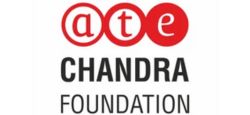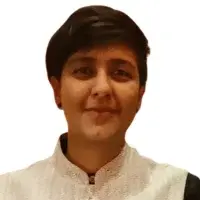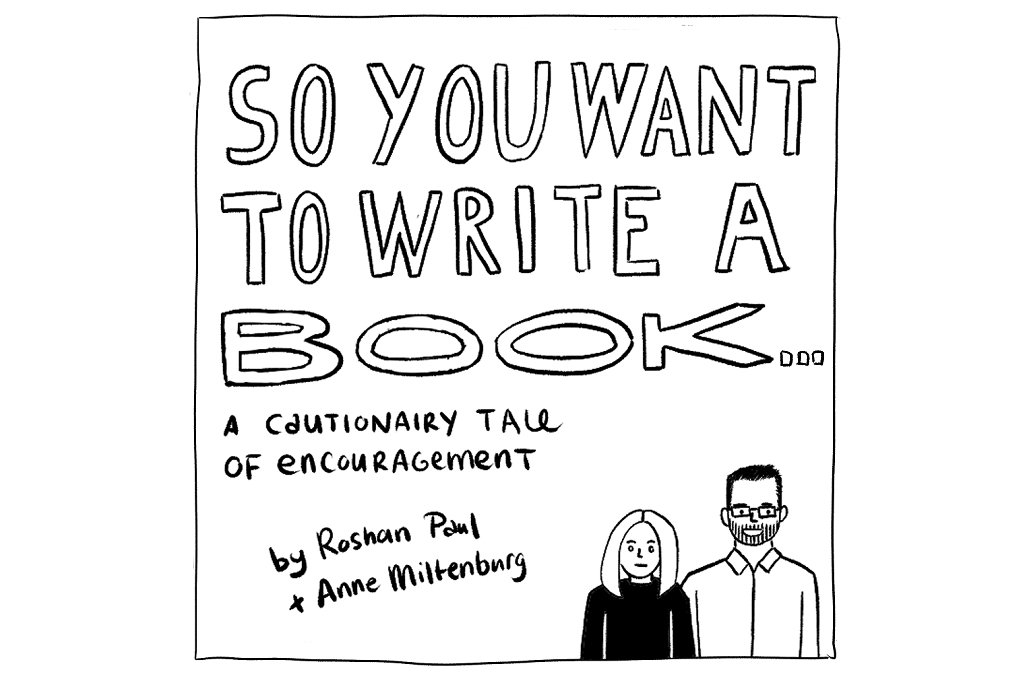Today, communications should be an integral part of every organisation’s strategy. For nonprofits especially, having a crisp, clear idea of how to execute a communications strategy can increase impact, strengthen brand recall, and inspire action. Despite this, most organisations struggle to invest in communications. In fact, even the ones who do manage to put aside monetary and human resources for comms sometimes end up doing so in a way that is ad hoc and ultimately ineffective.
This case study outlines the evolution of one organisation’s—Vidhi Centre for Legal Policy’s—relationship with communications as a core function. Read to understand how their communications strategy came to be—in particular, why they started believing in the need to invest in communications, how they went about doing so, and what they learned along the way.
Vidhi Centre for Legal Policy is focused on legal research to improve governance for the public good. They engage with the central government, state governments, and various other public institutions to inform lawmaking and legal policy. In addition, a core component of their work involves ensuring that their research is accessible to the public so that it can shape discourse.

Strategic communications has been key in helping the organisation achieve their impact goals, but learning how to leverage that has been a journey replete with learnings.
Starting out: Discovering communications
When Vidhi was founded in 2013, the team primarily consisted of lawyers, all of whom had a mix of academic, litigation, and law firm backgrounds. In these early years, the organisation struggled to understand the relevance, importance, and scope of communications. “We never really thought about communications as an important aspect of our work at all,” says co-founder Alok Prasanna.
Preparing communications material (such as the website, external interaction, and content) was viewed by team members as something that just needed to be done.
The need to develop a communications strategy was realised when the organisation’s work started gaining traction. “More people were reacting and responding to our work and associating it with what the government does, and that came with some backlash,” adds Alok. At this point, Vidhi started developing a reactive approach to communications. When public response to Vidhi’s work on the Aadhaar case also garnered a lot of negative attention, this reactive approach was considered a tangible communications strategy. Alok mentions that “the team fundamentally saw communications as a defensive tool to use when someone said something about us”.
At this time, preparing communications material (such as the website, external interaction, and content) was viewed by team members as something that just needed to be done. Alok mentions that communications was “an implementation function that was used to ensure that all the ‘i’s are dotted and the ‘t’s are crossed”.
This perspective changed when the Financial Resolution and Deposit Insurance (FRDI) Bill, which Vidhi had contributed to drafting, was made public. The bill introduced a ‘bail-in’ clause that would protect the deposit holders in a bankrupt bank by converting their deposits into shares. This was supposed to be a means to protect deposit holders without necessarily having to tap into taxpayer funds. However, coming a year or so after demonetisation, people worried if this clause would be used to convert their deposits into bank shares at a whim. The public backlash forced the government to take back the bill, resulting in Vidhi’s efforts on it going to waste. The negative response to the draft made Vidhi’s leadership realise that the ideas and intent behind their work, apart from their core values, were not reaching the public.

“Because no preparation had been made to tell people what the FRDI Bill was about, the immediate reaction was panic backlash. And this was when we realised the importance of communicating to people that our work is in public interest,” adds Alok.
In time, Vidhi understood that communications is the medium for an organisation to present its work and values to the public. They had to be proactive about it, because the importance of communication went much beyond social media traction. “Our research is public-facing. We are working for the larger public interest, whether we’re working with the government or whether we’re working on new reports on some issue, it all concerns the public,” adds Alok.
Only after this realisation was Vidhi ready to put energy into developing a concrete strategy; however, they still needed to learn how to do so.

Getting it wrong
Hiring a PR firm is often seen as a reliable and easy way for an organisation to manage its communications. This is also the path that Vidhi initially adopted. But while PR firms know how to reach out to the media and understand what works for a particular industry, they often have rigid boxes their clients fit into (corporate, lifestyle, etc.). Alok underscores that “they try to fit you in one of these because that’s how they work. They’re a firm that has hundreds of different clients.” Research organisations like Vidhi are content-heavy. Without an understanding of the research being conducted, it is complicated to communicate said research. Richa Bansal, the head of communications at Vidhi, adds that “communications in a research organisation have to be more nuanced because there is no immediate end user to associate it with. Hence, the audience has to understand the importance of how impacting policy will translate into real action. Further, we have to be clear that this is an already interested audience, but not informed enough.”
While the PR firm was engaged in several communications activities, they lacked a thorough understanding of Vidhi’s work, and hence fell short. “We were doing a bunch of different things and they all seemed okay, but there was no complete story,” says Alok. Cohesiveness was still absent. He adds that “what helped us resolve this issue was being able to frame and understand the problems we were facing with communications”.
Vidhi understood they needed two things: communicate impact, and a team that understood how to communicate this impact.
Getting it right
1. Hiring the right resources
Through conversations with various stakeholders, communications professionals, and board members, Vidhi discovered that what they needed was someone who was deeply committed to their work. “What we are doing is one of a kind. We’re not entirely a law firm, and we are not entirely a nonprofit. We are a bunch of ‘nots’ put together,” explains Alok, “and what we wanted was someone who understood that.”
For Vidhi, this meant hiring someone who was not necessarily a lawyer but understood what Vidhi was trying to do with its research. They needed someone who would be deeply embedded within the organisation, someone who could speak to their team of researchers, and make them see how they could better communicate their work to the public.
And when they got the resource on board, the impact was immediately obvious. Externally, they saw their website and blog become a go-to resource for mediapersons and law students. And internally they saw the effect a communications strategy can have, and the ways in which it can help them create impact.
Under Richa’s guidance, Vidhi externally started telling their story of impact proactively. “We decided to showcase our impact through storytelling—we created an impact section on the website and launched Vidhi’s first impact report. This had a significant impact. The audience saw research as a means to an end with positive intention, with concrete examples corroborated by external stakeholders. This proactive narrative setting turned the challenge on its head,” says Richa.
Since Vidhi brought an inhouse communications team onboard in 2020, they have seen a steady rise in their reach and audience engagement. For example:
- Their website receives five times more page views per month after its relaunch in July 2020. As of today, the views stand at approximately 100,000 per month.
- Their social media handles, especially Twitter, have seen a growth of nearly 62 percent since January 2020, with a steadily increasing engagement rate.
- Over 2021-22, the Vidhi team published 32 new reports. These reports had 301 media pieces that either featured, cited, or covered them. In fact, the communications team ensured an average of at least 12 pieces a month during these two years, excluding op-eds written by researchers.
2. Integrating communications with other teams
Richa says that “initially, you make a strategy which is really wide—how to tell your story, how to amplify that story, how to reach out to the media, how to leverage topicality, how to plug into ongoing conversations, and how to make it accessible to a larger audience. But over time, a granular approach is realised as the organisation evolves. For Vidhi, this was done by ensuring that all teams are frequently engaged with the communications strategy, and are involved in building advocacy and dissemination plans to communicate impact.”
Here’s how they did it. At Vidhi, each team that is producing research is asked to think through what their two-year or five-year plan is for that research—how do they plan to disseminate it? To whom? What impact do they hope to have as a result of that dissemination? Keeping these questions in mind at the early stages of a project helps teams use a communications and advocacy lens while putting together their reports. As a result of this, the reports themselves are better suited to create their desired impact, be it making a difference or creating some noise, or both.
3. Using communications to create impact
Realising that strategic communications could be used to leverage their research and impact on the ground was a game changer for Vidhi. When explaining how, Alok cites the example of Vidhi’s research on Punjab’s escalating drug problem and whether the laws at the time were effective.
He says, “When we conducted research on the drug problem in Punjab, 30–40 newspapers published our findings. But that wasn’t our goal. What we wanted to do was to start a conversation that probed into whether a particular law was right for India. That’s why, when the Aryan Khan drug case sparked a debate, we decided to capitalise on it—something we were able to do because we had Richa’s expertise on our side. Richa took our work, our data, brought it to the public and helped us make a case for why minor drug possession should be decriminalised.”
The effects of this strategy are still visible. Today, if you google ‘drug decriminalisation in India’, Vidhi’s report still shows up. Their research is still cited when people talk about drug use in the country, despite the fact that they were not the first (or the last) to do research on this issue. What set them apart from the rest was a clear communication strategy: the right story, at the right time, taken to the right audiences. And as a result they find themselves in a place where few nonprofits can claim to be—their research is informing the way people think; it has been allowed to move beyond sitting on their website.
To measure impact, Vidhi now develops impact reports, which are created with inputs from all the different teams.
To measure this impact, Vidhi now develops impact reports, which are created with inputs from all the different teams. As Richa says, “The indicators of what impact is for an organisation like Vidhi were established after many in-house conversations. Today, we are still refining them; it’s a continuous process to ensure that we are doing right by our vision.”
4. Remaining flexible
Evolving and discovering newer ideas and assessing older ones is also a constant part of growth for an organisation. “I think one key aspect that really helps is a keenness to learn and revisit what you’re doing to ensure that nobody is stuck in their ideas. And this is really critical. An ability to look [at] and assess what we [can] do differently to actually deliver the impact we want to deliver—that attitude really helps,” adds Richa.

Their advice to nonprofits
1. Start viewing communications as fundamental to your work
Irrespective of the field a nonprofit is involved in, communications should be considered a priority. Alok says that communications “does not necessarily need to be at a large scale. It can be limited to certain stakeholders like funders or the government but it is imperative that it is seen as fundamental to the organisation.”
To make this happen, the leadership team needs to view comms as a primary activity that is not separate from the work an organisation does, but builds on it instead. If communications is viewed as an add-on, it will be difficult to steer the organisation towards its goals.
2. Show your funders that you are committed to strategic communications
An early investment in communications can be of great help to an organisation. “I would consider communications as a fundamental aspect of your funding. When we send a proposal, we send researchers’ costs in one head, and communication, strategy, and all other costs in another head. What is needed is to not see communications as an overhead that can be pushed back on or cut down,” highlights Alok.
This investment should be mindful of the organisation’s needs. It is not important to have an entire team dedicated to comms, but hiring even one individual who understands what the organisation needs, and how to put the right communications systems in place, can make a huge difference.
3. Make team members partners in the communications journey
A collaborative approach with other team members is an important part of making communication efforts successful. Richa highlights the need to involve other teams in communications work by explaining the process to them, having them talk about the nuances of their work with the communications team, and building a working relationship. She says, “If an organisation works across multiple verticals, it is important to have constant conversations with various teams to understand the smaller picture. This is different from just putting out a report. It’s about looking at how that report fits in with the larger narrative of a team’s work, and then how that team’s work fits in the larger narrative for the organisation.” Having access to these nuances will allow a communications professional to better execute their projects.
Their advice to funders
1. Invest in building the communication capacity of nonprofits
There should be an investment in capacity building. It is important that funders create opportunities for nonprofits to learn from trainers who have experience with communications in India. “Pick people who are working in the space here, and are embedded in the context,” says Richa. A foreign firm would not know the ins and outs of the Indian system, which is important to administer any meaningful training. Richa says she’s seen “funders can sometimes be inclined to bring big foreign names with the best of intentions, but they really don’t understand the context of India”. Building the right programme with the right people is very important. “Capacity building should be thought of as something which requires some sustained training and handholding, and as such takes place over a period of time, even a year through online and offline interactions,” Richa adds.
2. Be innovative in your funding approach
Alok suggests that funders should be innovative about what they’re willing to fund. “For example, instead of expecting nonprofits to build capacity for communications, they can embed somebody who works in a news organisation or a PR agency within nonprofits. The funders should pay their salaries and ensure they stay for a year and learn, while lending their expertise to the nonprofits,” he adds. In addition, donors could consider investing in the development of communications courses for the social impact sector. A variety of these courses can help organisations like Vidhi (that work on research) as well as those that have a grassroots programme.
3. Make communications more accessible to nonprofit organisations
This can be done in a variety of ways. Funders can encourage their grantee partners to invest in communications and support the cost of doing so, or they could explore building a shared service model where they hire an agency to build out the capacity for a group of their partner organisations. Importantly, by talking about the need to invest in communications with their peers, and being transparent about their support for the same, donors can begin creating a mindset change.
—
About Alok and Richa
Richa Bansal has more than 17 years of experience in development communications and journalism. She is the head of communications at Vidhi Centre for Legal Policy, and has worked as the director of communications at the Centre for Policy Research for five years. Prior to that, she has held communications roles in different gender-based organisations, including the International Center for Research on Women, Population Foundation of India, and CAMFED, UK. She started her career as a journalist and worked for newspapers in Ahmedabad, Hyderabad, Pune, and Kolkata before pursuing an MPhil in Development Studies from the University of Cambridge, UK. She also holds a master’s degree in mass communication and an undergraduate degree in English literature.
Alok Prasanna Kumar is the co-founder and lead at Vidhi Centre for Legal Policy. His areas of research include judicial reforms, constitutional law, urban development, and law and technology. He graduated with a BA LLB (Hons) from NALSAR University in 2008 and obtained the BCL from University of Oxford in 2009. He writes a monthly column for the Economic and Political Weekly and has published in the Indian Journal of Constitutional Law and National Law School of India Review, apart from media outlets such as The Hindu, Indian Express, Scroll, Quint, and Caravan. He has practised in the Supreme Court and Delhi High Court from the chambers of Mohan Parasaran. Alok co-hosts the Ganatantra podcast on IVM Podcasts.
* This article was updated on December 12, 2022 to include data on how Vidhi’s reach increased after hiring an inhouse communications team.
—
Know more
- Read this report on the benefits and challenges of embedding communications staff in research teams.
- Read this article to learn more tips on building a communications strategy.
Do more
- Want to start working with communications professionals? Take a look at this crowdsourced list of illustrators, graphic designers, and social media freelancers put together by Rainmatter Foundation.






